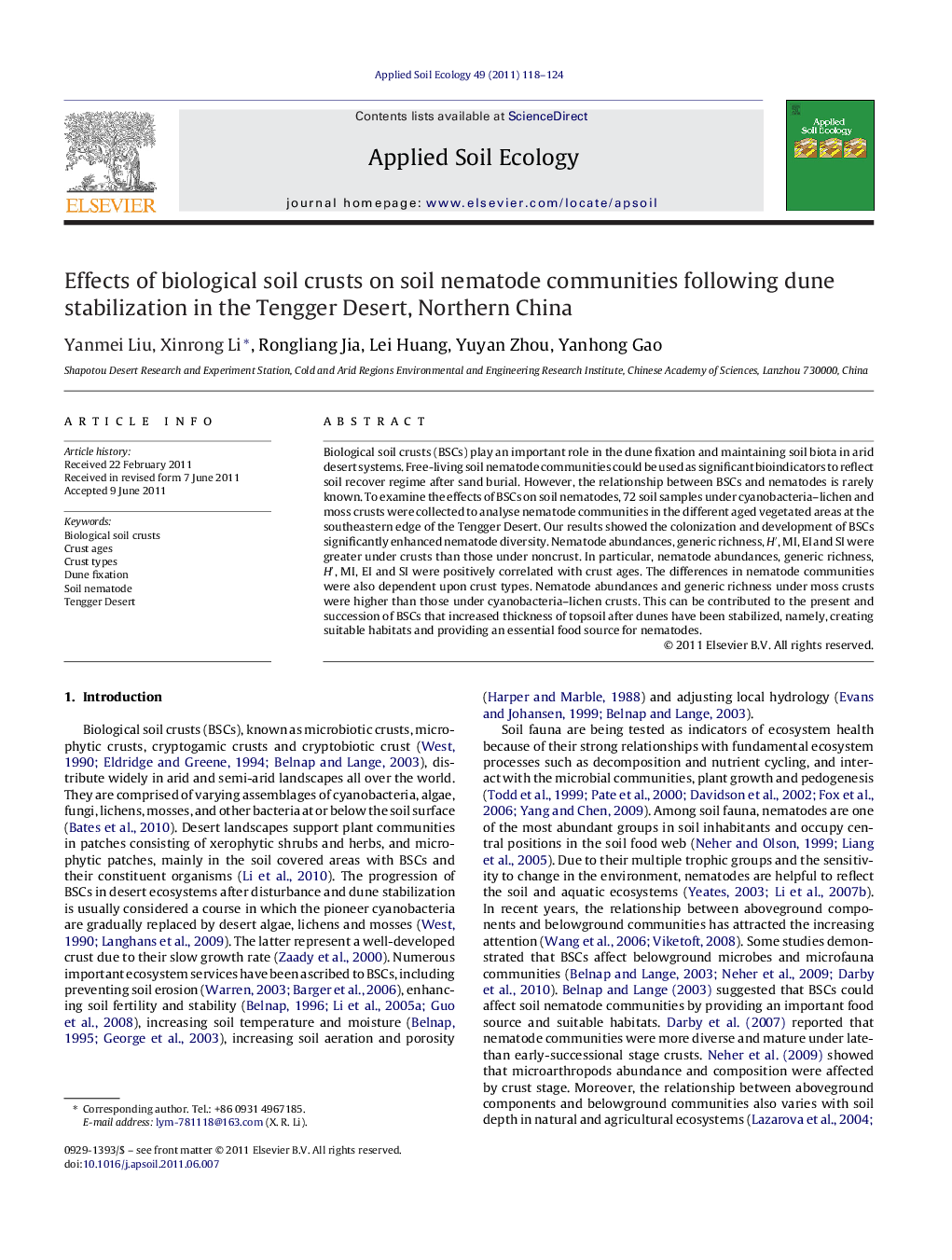| کد مقاله | کد نشریه | سال انتشار | مقاله انگلیسی | نسخه تمام متن |
|---|---|---|---|---|
| 4382704 | 1617834 | 2011 | 7 صفحه PDF | دانلود رایگان |

Biological soil crusts (BSCs) play an important role in the dune fixation and maintaining soil biota in arid desert systems. Free-living soil nematode communities could be used as significant bioindicators to reflect soil recover regime after sand burial. However, the relationship between BSCs and nematodes is rarely known. To examine the effects of BSCs on soil nematodes, 72 soil samples under cyanobacteria–lichen and moss crusts were collected to analyse nematode communities in the different aged vegetated areas at the southeastern edge of the Tengger Desert. Our results showed the colonization and development of BSCs significantly enhanced nematode diversity. Nematode abundances, generic richness, H′, MI, EI and SI were greater under crusts than those under noncrust. In particular, nematode abundances, generic richness, H′, MI, EI and SI were positively correlated with crust ages. The differences in nematode communities were also dependent upon crust types. Nematode abundances and generic richness under moss crusts were higher than those under cyanobacteria–lichen crusts. This can be contributed to the present and succession of BSCs that increased thickness of topsoil after dunes have been stabilized, namely, creating suitable habitats and providing an essential food source for nematodes.
• Biological soil crusts significantly affected nematode communities.
• Nematode abundances, generic richness, H′, MI, EI and SI were positively correlated with crust ages.
• Nematode abundances and generic richness under moss crusts were higher than those under cyanobacteria–lichen crusts.
• Biological soil crusts could create suitable habitats and provide an essential food source for soil nematodes.
Journal: Applied Soil Ecology - Volume 49, September 2011, Pages 118–124